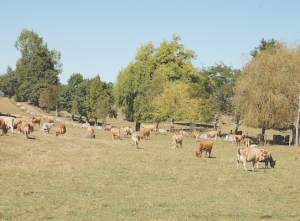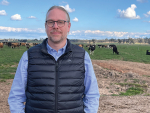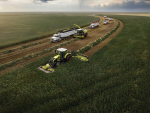DairyNZ says these events are unpredictable and vary in their timing, severity and duration. But their impact on milksolids production and farm profit can be minimised by acting early to implement proven strategies.
The aim of dry summer management is two-fold: to protect next season’s production and reproduction by getting all cows to body condition score (BCS) 5.0 by calving, and first and second calvers to BCS 5.5; and to maximise profitable milksolids production for the rest of the current season.
For summer-dry farms, as soon as feed demand exceeds pasture growth, the next season is in jeopardy as cow condition will be lost, especially the first calving cows in the herd.
Often the option to increase feed supply is taken before reducing cow demand.
However, the cheapest form of supplement is to dispose of known culls.
Milking young and thin cows OAD or 16-hour milking or drying-off these cows should also be considered before starting to feed supplement.
For farms prone to summer dry, rarely does the farm grow sufficient pasture to meet both cow demand and pasture cover targets for the autumn.
DairyNZ says even if there are periods of growth in January-February that exceed demand, this growth is usually required to build up feed cover to meet future cow demand. For most farms (excluding irrigated and summer safe) milking 80-85% of peak cows from January onwards does not result in low pasture utilisation (wasted feed) or less milk production – in fact more milk is produced as less feed goes to cow maintenance.
Feeding supplement to culls is expensive. If the known culls are disposed of, the rest of the herd is fed better and all the extra feed goes to milk production, not to maintenance as with culls. Where 20% of the herd is culled, the remaining cows can be fed 25% more, i.e. cows have more feed for milk production and cow condition.
Body condition at calving of first and second calvers has a major impact on their reproductive performance.
These animals need to be BCS 5.5 at calving. Cows in their first lactation need to be preferentially treated (OAD or dried-off early) as they are still growing. Research shows that heifers suffer more BCS loss in summer. Keeping culls puts more pressure on these animals.
In December calculate how many cows you can cull, making a conservative estimate of the number of empties. This will give you the number of cows you can cull for traits other than being late or empty. Cull on production worth, repeat clinical mastitis cases (normally three strikes and culled), high somatic cell count, three teaters, temperament, udder conformation and age.
There is a common belief that empties milk better than pregnant cows. However, this is not the case as reported by DairyNZ research in 2003 where they analysed the production from 154 identical twin cows, one twin pregnant, and the other empty. Milk yield in the pregnant cows was not less than the twin that was empty until 250 days of lactation, after which the pregnant cows yielded less by about 0.8L/cow/day. Liveweight began to increase in the pregnant cows after 175 days in milk.









